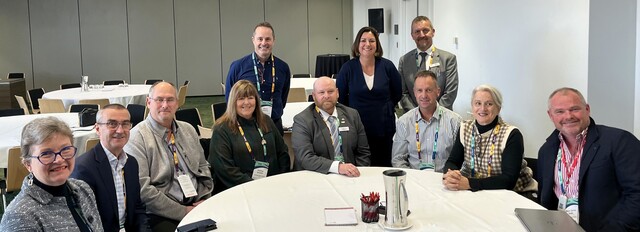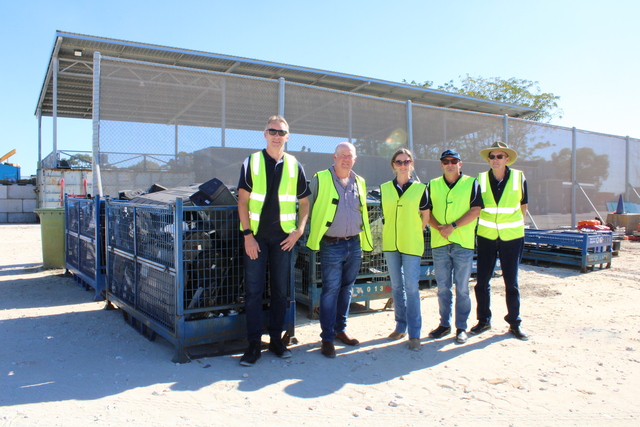The Good Oil by Rod Brown *
Have you noticed that while ‘jobs growth’ always gets parroted at election time, economic development per se never holds centre stage? Sure, in the Federal election build up there were so called job creation projects announced – roads funding, company specific grants, the extension of the first home buyers scheme and so forth. But these hardly add to the nation’s economic capacity nor create sustainable jobs in the tradeable goods and services sector.
On the bright side, the Howard Government’s Innovation package and Labor’s Knowledge Nation agenda show signs that policy makers are trying to develop coherent policies for our knowledge intensive industries, as part of addressing our balance of payments and currency problems.
Nevertheless, Australia still lacks a strategic framework to coordinate the efforts of diverse stakeholders. The preeminent think tank, the OECD, recognises the problem too, and argues the importance of ‘growth poles’ that can link education, R&D, and inward investment.
There are countless examples of growth poles in the EC, the US and Japan. Indeed, the UK consultancy firm SQW recently forwarded some timely material on the ‘Cambridge Phenomenon’, that first surfaced in the 1980s.
It relates to the myriad interconnections between Cambridge high tech firms, many of which had originated in University departments.
In 1985, there were around 400 high tech firms employing 16,000 people – and half these were in eight big firms. These included two chemical companies that had local roots but were already parts of multinationals, as well as electrical/electronic enterprises owned by Philips, Cambridge Instruments, TWI and Huntingdon Life Sciences.
The scale of activity is now much greater – high tech employment is 32,000. Most of the growth was generated from within, via already established firms and new, globally focused start up businesses. The spin outs have been notably from the life sciences, and collaborative ventures with computing and the physical sciences.
Microsoft was a key boost in reinforcing the area’s image both in the UK and internationally. When other new arrivals were asked the most important reasons for their choice of a Cambridge location, the most frequently mentioned were personal connections (25%), location (22%) and image (18%).
Some industry areas have declined in relative importance since 1985, notably electronics/audio and instrument engineering.
By contrast, software has continued to be important within specialised software firms and as a generic resource for other firms.
Biotechnology’s relevance has increased radically and there is substantial further potential, especially in biomedicine. The technology consultancies have also grown and are now a highly distinctive feature of the Cambridge scene.
SQW has identified the following four key factors underpinning the Cambridge success.
Intellectual capital
Cambridge University rates highly in most league tables and there are many research institutes around Cambridge with international reputations, such as the Laboratory for Molecular Biology.
Major companies with strong science and technology resources have been encouraged to base their research efforts alongside University departments – there are many such ‘embedded laboratories’ that enhance the overall research effort and help University researchers to understand industry priorities. The policy towards intellectual property ownership and exploitation has been liberal, and the collegial structure facilitates dialogue and collaboration across disciplinary boundaries.
Land property and infrastructure
Encouraged by the pioneering initiatives of Trinity College and then St John’s College, Cambridge now has an enviable range of science and technology parks. In both cases, a return for the respective colleges was sought as their charitable status required – but they also had a broader vision of how the area should and could develop. These efforts created the market in which private sector initiatives have since come strongly to the fore.
People
Many of the people now working in the Cambridge precinct, perhaps as many of 60 per cent, have migrated from other counties and countries. The business and professional opportunities were obviously the carrot, but housing, the physical and social infrastructure and the overall quality of life have been vitally important in attracting people.
The area’s specialist labour market is also just about large enough to provide ambitious younger people with sufficient job opportunities for them to develop their careers without uprooting hearth and home. This, together with the favourable connotation that Cambridge has on individuals’ CVs, is a genuine source of advantage for individuals and firms alike. The positive labour market context may also increase the willingness to take entrepreneurial risks.
Finance and advanced business services
Business finance is seldom enough. An effective innovation system encompasses advisers on technical, market, legal, financial and IP issues. Ideally these advisers are sufficiently enthusiastic to invest in developing long term relationships with high potential firms. In this regard, Cambridge benefits from being home to technology consultancies, venture funds, business angel networks, the big as well as second league accounting firms, and ambitious legal firms.
SQW emphasises the interconnectedness of the elements that comprise the innovation system … ‘There will never, within an area, be a perfect balance between these elements, but it is important that none are missing and that efforts are made to identify and redress deficiencies even if that means drawing in, or connecting to, resources from other areas’. A further dimension is ‘culture’ and ‘trust’ – they go hand in hand with networking.
The local media has encouraged positive attitudes towards an enterprise culture – including hard work, social recognition and significant reward – this has begun to take root in schools, local colleges and the area’s political and social leadership structures. A positive international image has been built, and the place has become the brand from which all can benefit.
The Australian context
While solutions are appropriate only to their time and place, the swathe of Australian universities looking to lift their game in commercialising R&D could do a lot worse than reflecting on the Cambridge experience.
Moreover, there are also lessons for government agencies – specifically to introduce some intelligent and transparent leverage on companies in exchange for taxpayer support.
For example, the Partnerships for Development program run by the Commonwealth could be strengthened to ensure that companies in receipt of certain types of government assistance or major government contracts develop effective alliances with our universities and public research bodies. This type of encouragement is standard practice in many OECD countries.
For further information on SQW contact Bill Wicksteed at wwicksteed@sqw.co.uk
* Rod Brown’s Canberra based consultancy group, Australian Project Developments Pty Ltd, specialises in industry/regional development and government liaison. For further information telephone (02) 6231 7261 or email apd@orac.net.au







